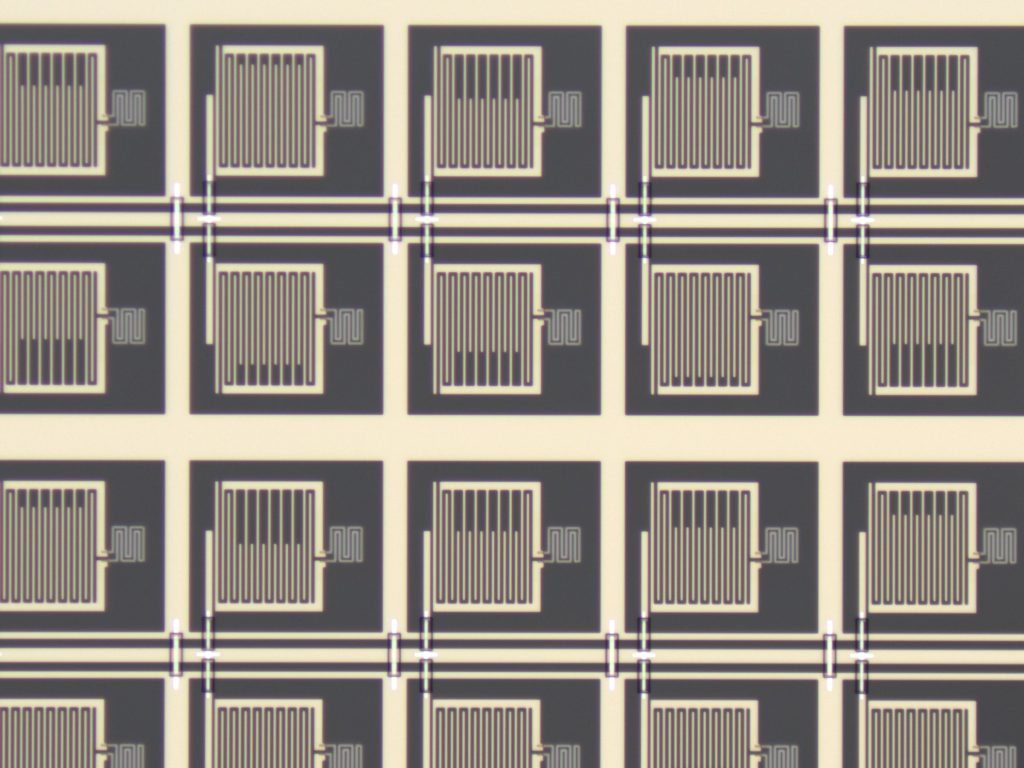Scientists have discovered that electron pairs can stay together even when the superconducting state has collapsed. They observed the phenomenon in titanium nitride until up to double the critical temperature. In conventional superconductors, electron pairs and superconductivity go hand in hand. Titanium nitride is used for its superconductive properties in space research for detecting exoplanets. Publication in Science on 29 October.
Cooper pairs
The exact mechanism behind superconductivity is one the of the enduring mys-teries of physics. There is a theory that explains why some materials become superconducting: once cooled below their transition temperature, the electrons in the material pair up to form Cooper pairs. These Cooper pairs condense into a quantum liquid that flows effortlessly, without resistance, through the crystal, resulting in superconductivity.
joint process
Up until now, physicist thought that the formation of Cooper pairs and the condensation into the resistance-free state is a joint process that happens simultaneously. ‘That’s what we all learned in textbooks’, says Leiden physicist Koen Bastiaans, lead author of the study.
mysterious quantum liquid state
Here comes the big surprise. Bastiaans and colleagues have discovered that Cooper pairs could still exist above the superconducting transition temperature, forming a new mysterious quantum liquid state. ‘This means that the formation of Cooper pairs is not the same process as the condensing itself’, says Bastiaans. ‘For me, this completely changed how I think about superconductivity.’
raindrops on the roof
Research started out in close collaboration with Delft University of Technology and SRON Netherlands Institute for Space Research, focusing on the superconductor titanium nitride, which is also used in sensitive optical detectors for space research. The physicists applied a new technique called Scanning Tunnelling Noise Spectroscopy, that measures the electrical noise within the material. The noise is different for pairs compared to single electrons. ‘It’s a bit like listening to raindrops falling on the roof’, Bastiaans explains. ‘When the drops grow fatter, the drumming sound of the rain changes.’
Cooper pairs without superconductivity
While the superconductivity vanishes at 2,95 Kelvin (degrees above absolute zero), the Cooper pairs stay around until the temperature reaches about 7,2 Kelvin. ‘So you can have Cooper pairs without condensation and superconductivity’, says Bastiaans. ‘There had been hints that this was possible, but never uncontrovertible proof. The Cooper pairs we found form a new kind of quantum liquid.’
superconducting detectors
Scientists from SRON, including Pieter de Visser, use titanium nitride to develop a detection technique for space instrumentation—Microwave Kinetic Inductance Detectors (MKID). These superconducting detectors are able to measure the energy of individual photons from exoplanets. To improve the detection mechanism, they need to understand the physics behind it. Therefore, they collaborated with Bastiaans’ group and contributed by providing the titanium nitride samples. De Visser: ‘We show that technology development and fundamental science go hand in hand. While we are trying to understand the science behind an observational technique for astronomy, it can lead to fundamentally new physics.’



